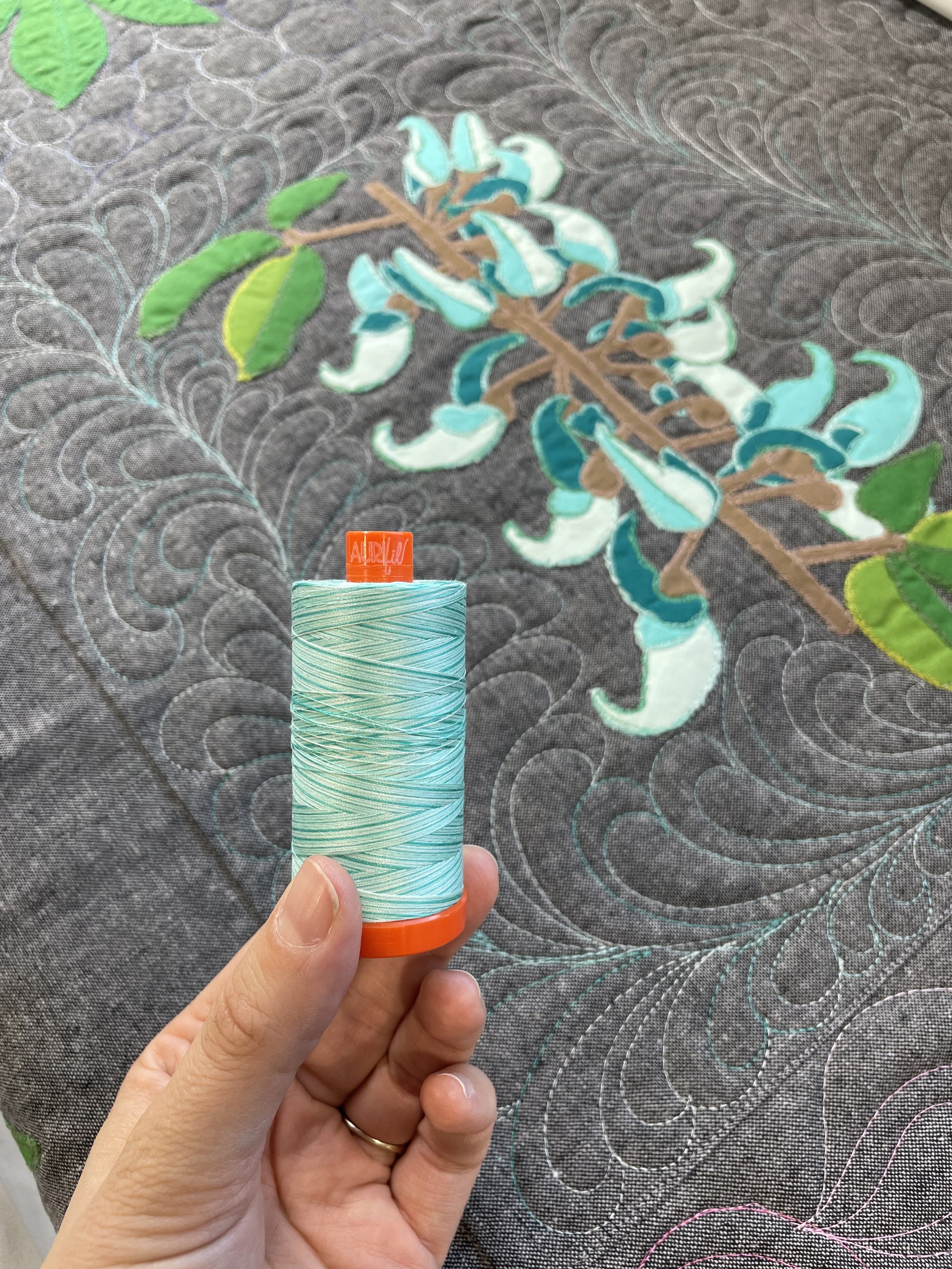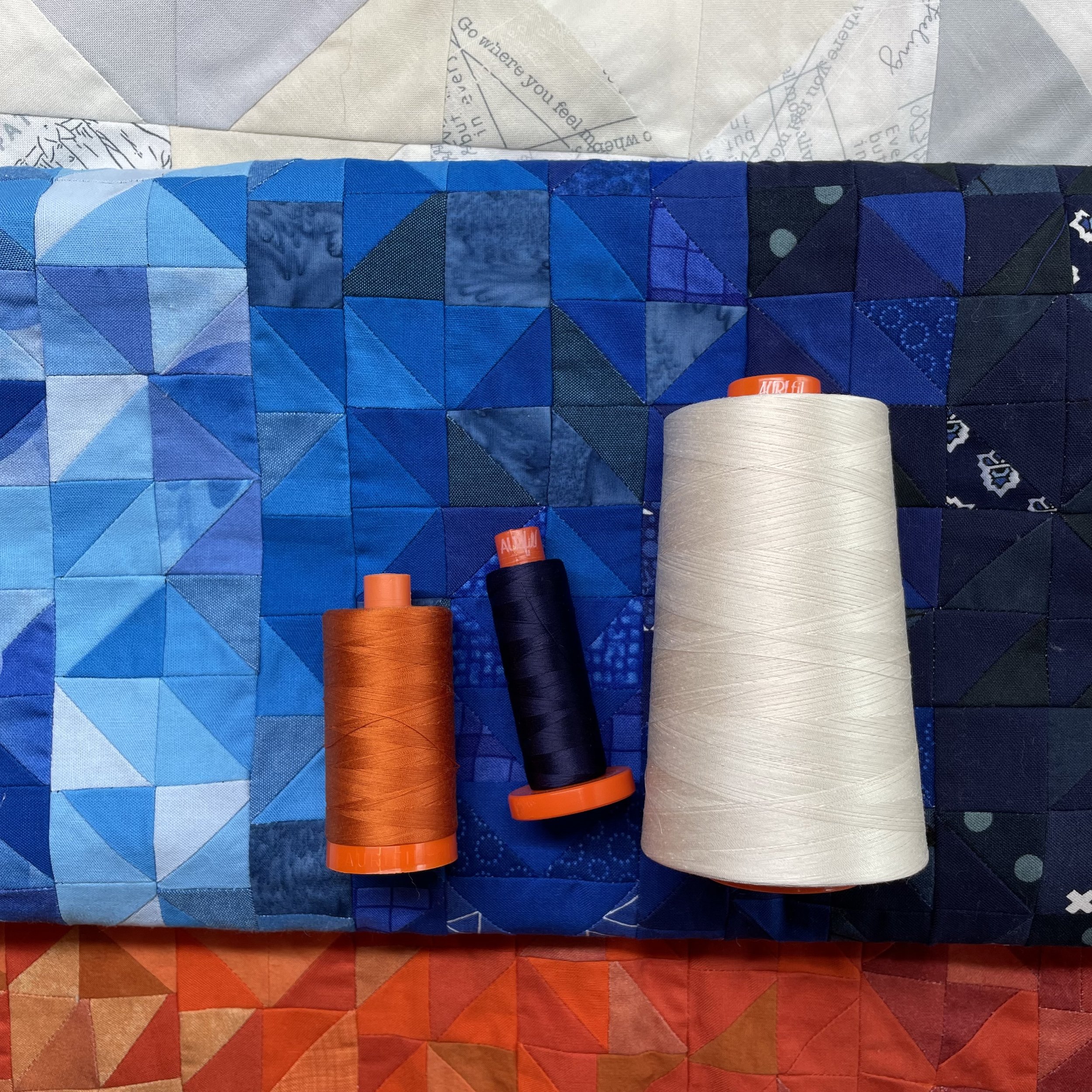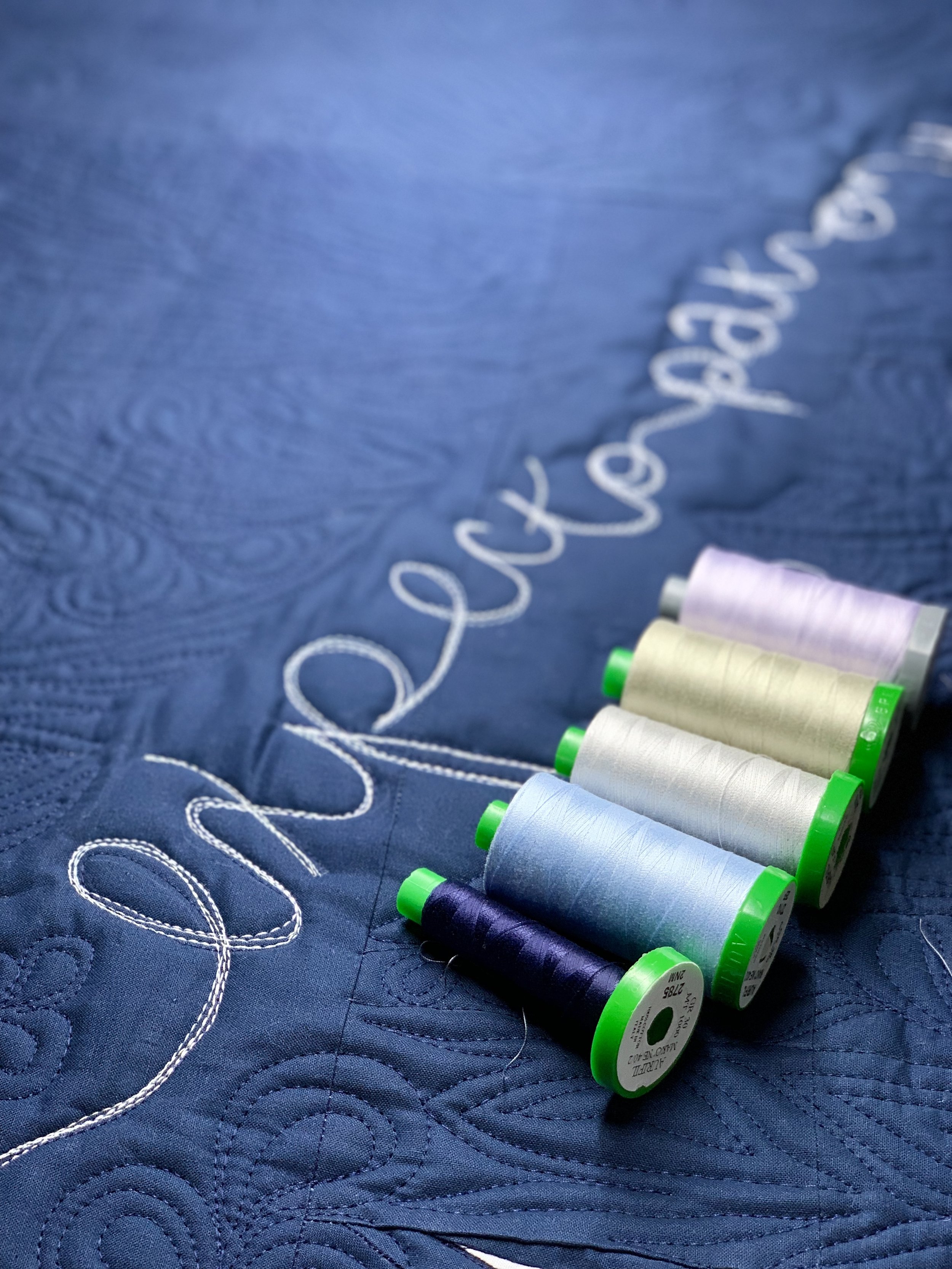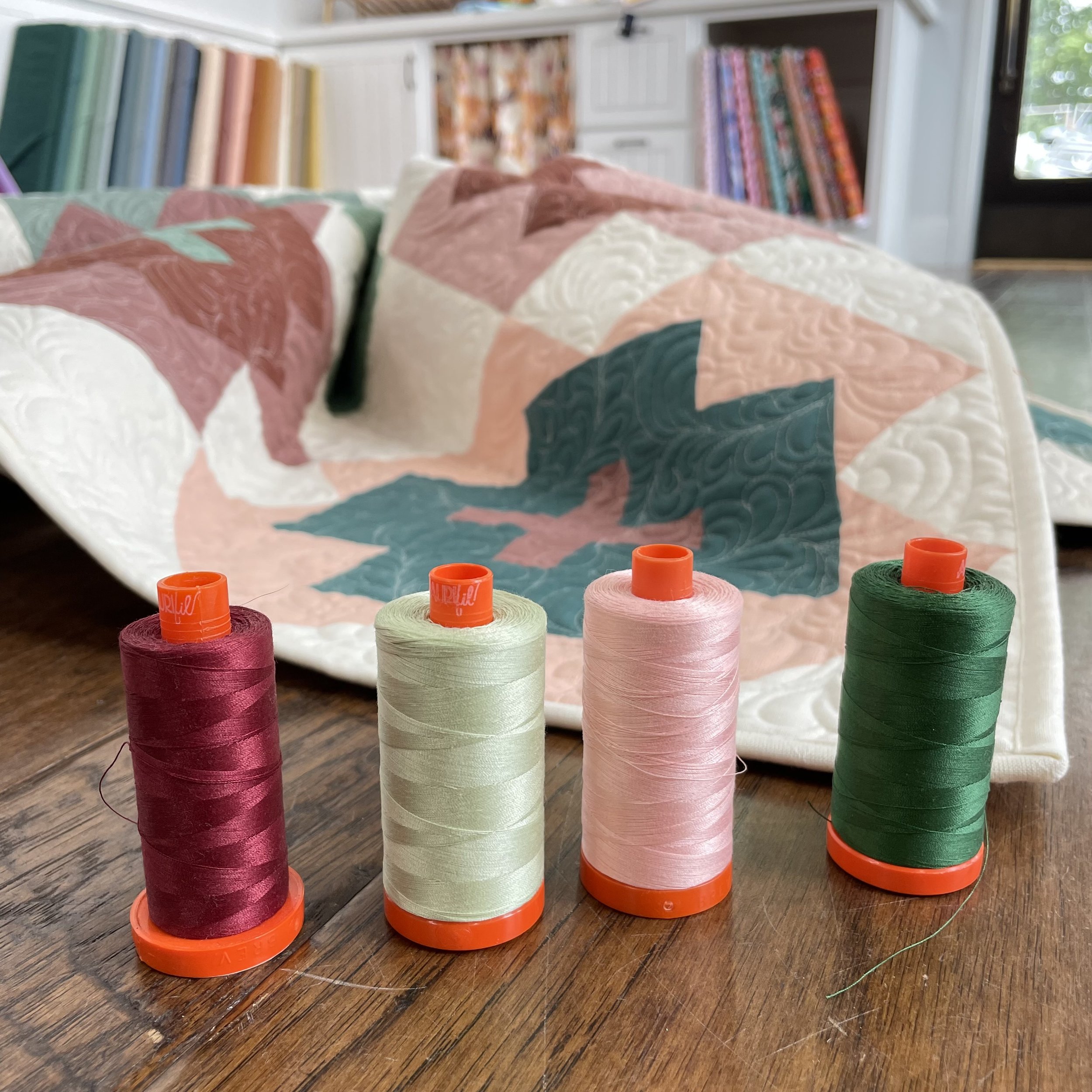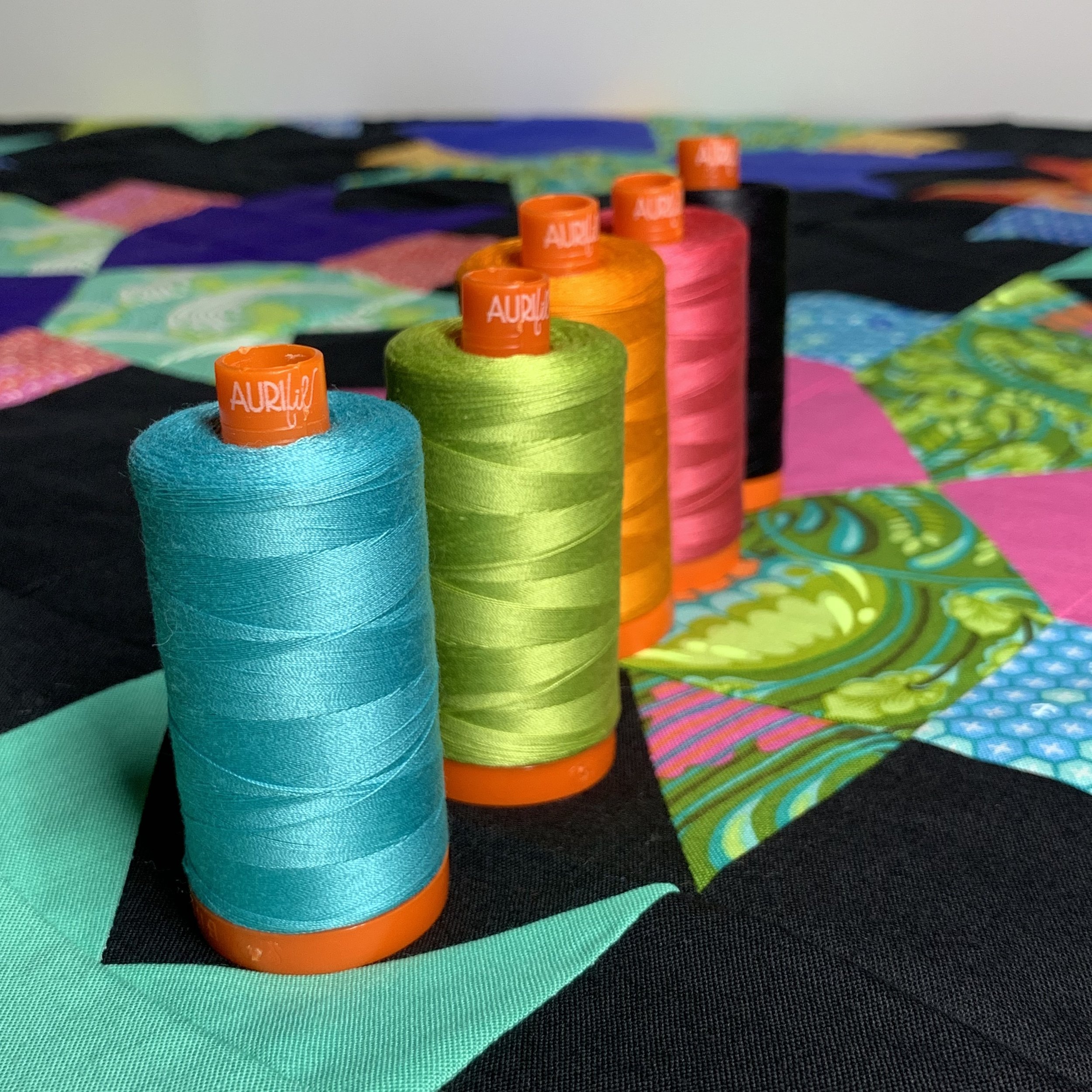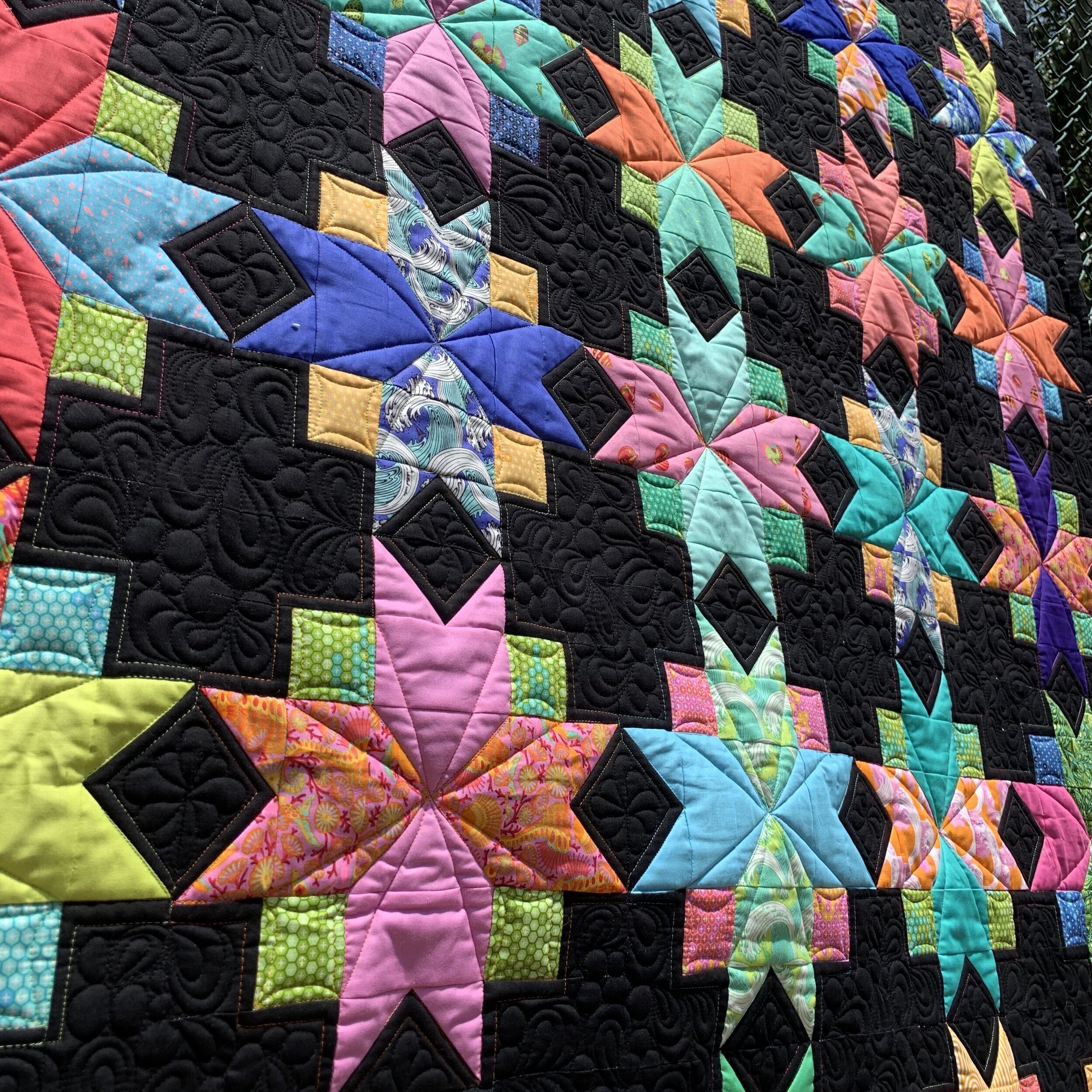Choosing a Thread Color for Quilting
In addition to the pattern and texture of quilting, our thread color has the opportunity to add a little “sparkle” to our work. But what’s the best way to choose what color thread to quilt with? I can’t wait to share my tips with you!
(This post may contain affiliate links)
I love to tell the story of finishing my first quilt top. I was talking to a friend and commented, “I have the top done, but now I have to figure out how to quilt it.” Without skipping a beat, she nonchalantly replied, “Oh that part’s easy— you just stitch in the ditch.”
Even then, as little as I knew about quilting, my flabbers were ghasted. There is so much that goes into finishing your quilt: basting, deciding how to quilt it, and, of course, choosing what thread color to use on your precious project!
My Thread Choosing Process
There’s not a “formula” to decide what thread looks best— sometimes you might want it to blend, sometimes you might want it to stand out, and, sometimes, probably the most often, you might like something in the middle, so your quilting stitches add a little “sparkle” to the final project.
While I may not have a formula for choosing the perfect thread color, I do have a process I follow when folks bring me quilts for longarming:
1) First, I pull 6-8 thread choices out of my thread drawer. I pull a few neutrals (Aurifil 2600 dove grey, 2311 cream, 2000 white, and 2800 silver green are common neutrals for me), a few colors that appear in the quilt, and always a couple of “wild cards”— variegated threads, threads that match an accent color in the quilt, or colors that complement the quilt.
2) I spread the quilt on our big cutting table, and unspool 24-36 inches of each thread across the quilt top, making sure they cross the lightest lights and darkest darks, as well as the midtones
It’s important to unspool the thread, because color can appear really intense on the spool, but an individual stitch is much more delicate. Unspooling the thread imitates a line of stitching more accurately
3) We start the process of elimination. Usually there are three or four threads that are an immediate “no.” Once we get down to 2-3 threads, we’ll move them around the quilt, look at it from different angles and in different light. I am amazed how often we choose a thread that was one of the “wild card” options, even for my clients that like pretty simple and subtle quilting!
Video
You can see a glimpse of this process in the Iberian Lynx video I made for Aurifil Color Builders 2021:
Oh, and just in case you’re wondering, I usually match my top and bobbin thread. It’s a lot easier to get crisp tension, and I don’t mind if my thread shows on my back. Plus, just choose a busy back and all your stitches will blend!
Resources
Thread Subscription: Aurifil Color Builders & Endangered Species BOM (featured in video)
BLOG: Quilting Plans for the Endangered Species BOM (featured in video)
BLOG: Perfect Tension for FMQ
BLOG: Quilting Plans for Polaris (shown at top)
SHOP: Quilting Rockstar Thread Boxes: Fall/ Winter and Spring/ Summer
FREEBIE: FMQ Troubleshooting Guide
Share this blog if you found it helpful:


